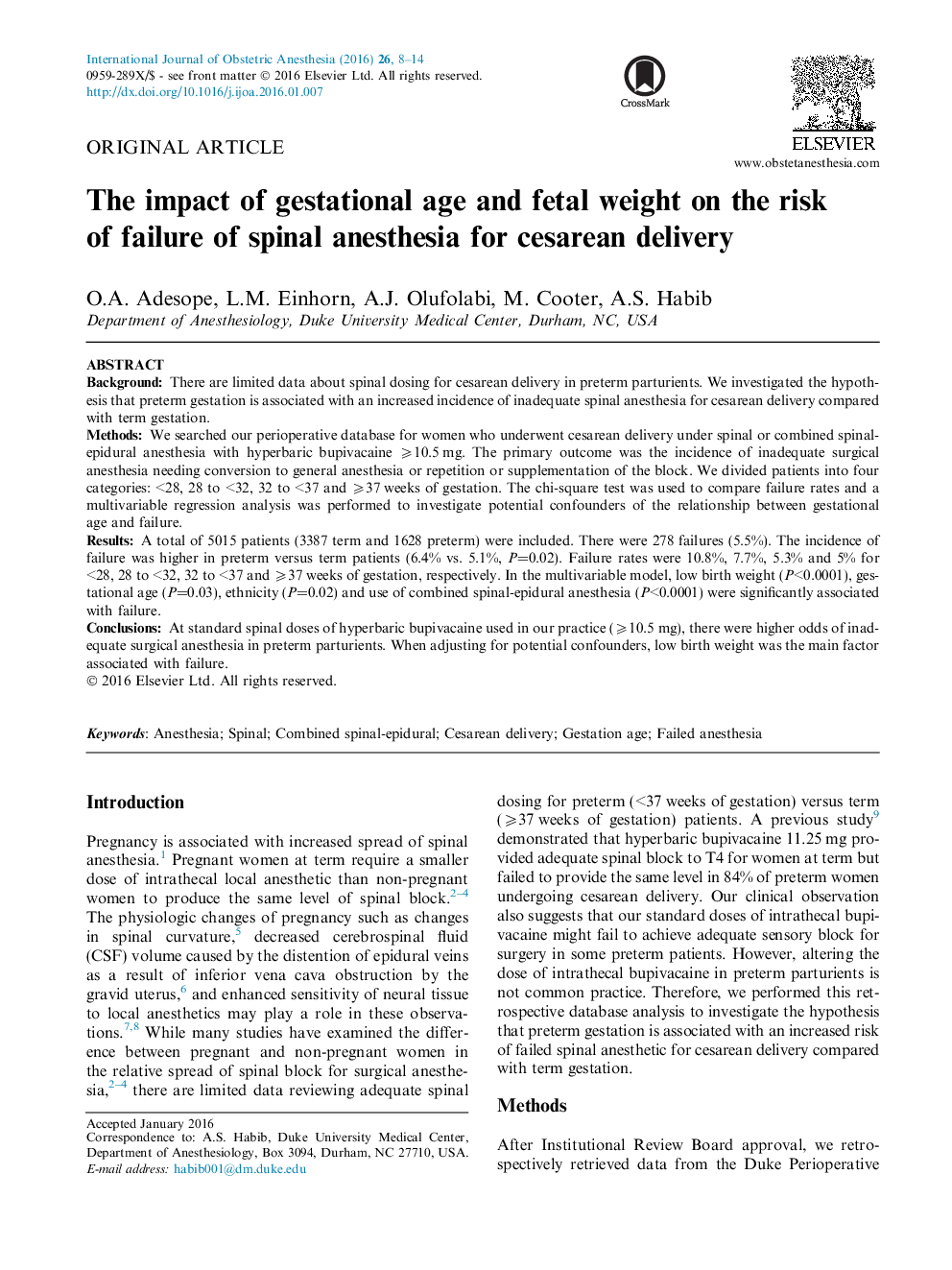| Article ID | Journal | Published Year | Pages | File Type |
|---|---|---|---|---|
| 2757429 | International Journal of Obstetric Anesthesia | 2016 | 7 Pages |
•We retrospectively reviewed our perioperative cesarean delivery database.•Spinal anesthesia failure rate was higher in preterm versus term patients.•The highest risk of failure was at gestational age <28 weeks of gestation.•Low birth weight was the main factor associated with failure.
BackgroundThere are limited data about spinal dosing for cesarean delivery in preterm parturients. We investigated the hypothesis that preterm gestation is associated with an increased incidence of inadequate spinal anesthesia for cesarean delivery compared with term gestation.MethodsWe searched our perioperative database for women who underwent cesarean delivery under spinal or combined spinal-epidural anesthesia with hyperbaric bupivacaine ⩾10.5 mg. The primary outcome was the incidence of inadequate surgical anesthesia needing conversion to general anesthesia or repetition or supplementation of the block. We divided patients into four categories: <28, 28 to <32, 32 to <37 and ⩾37 weeks of gestation. The chi-square test was used to compare failure rates and a multivariable regression analysis was performed to investigate potential confounders of the relationship between gestational age and failure.ResultsA total of 5015 patients (3387 term and 1628 preterm) were included. There were 278 failures (5.5%). The incidence of failure was higher in preterm versus term patients (6.4% vs. 5.1%, P=0.02). Failure rates were 10.8%, 7.7%, 5.3% and 5% for <28, 28 to <32, 32 to <37 and ⩾37 weeks of gestation, respectively. In the multivariable model, low birth weight (P<0.0001), gestational age (P=0.03), ethnicity (P=0.02) and use of combined spinal-epidural anesthesia (P<0.0001) were significantly associated with failure.ConclusionsAt standard spinal doses of hyperbaric bupivacaine used in our practice (⩾10.5 mg), there were higher odds of inadequate surgical anesthesia in preterm parturients. When adjusting for potential confounders, low birth weight was the main factor associated with failure.
